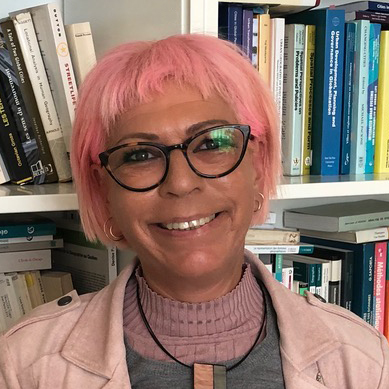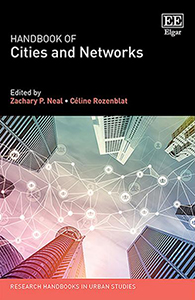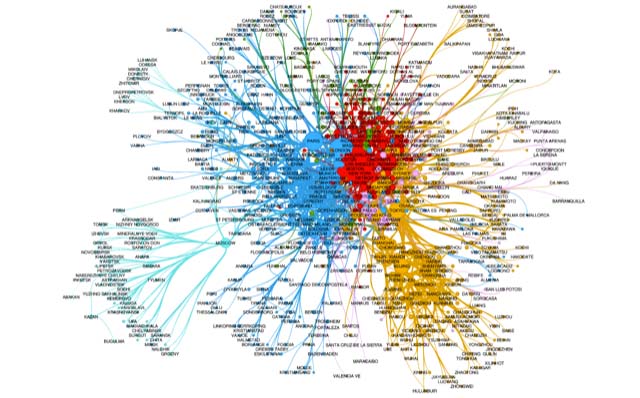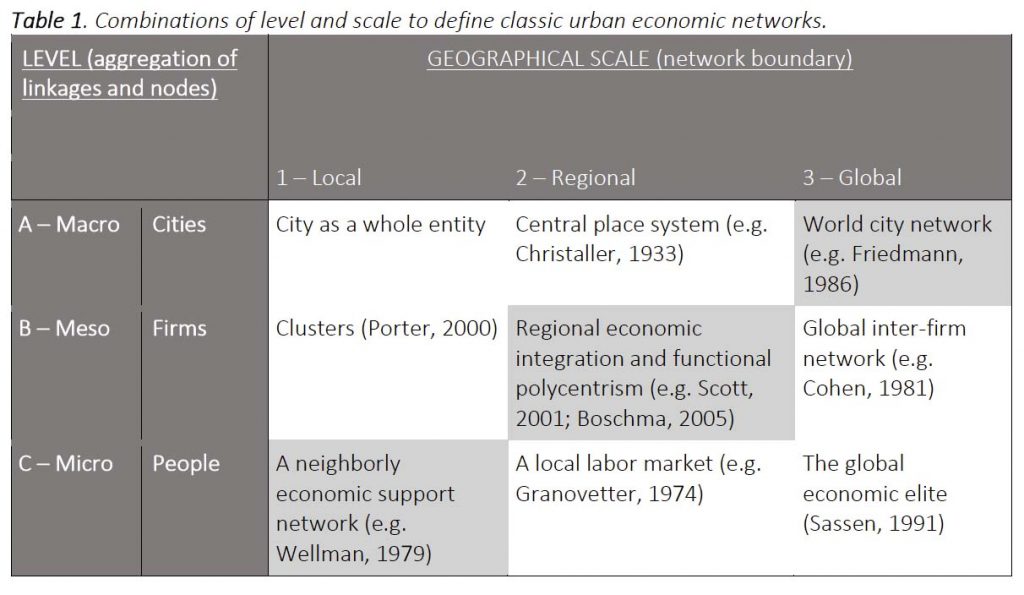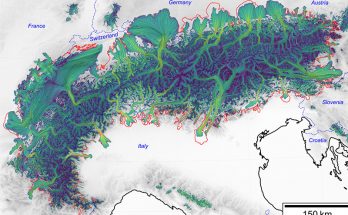Cette publication est également disponible en :
![]() Français
Français
Céline Rozenblat (Institute of Geography and Sustainability, FGSE, University of Lausanne) and Zachary Neal (Michigan State University) edited the Handbook of Cities and Networks published in July 2021.
This handbook provides a broad overview of contemporary research on how economic, social, and transportation networks affect the processes of city transformation.
What is the origin of this guide?
Following the coordination ten years ago of a special issue of the scientific journal Urban Studies devoted to cities and networks, the editor Edward Elgar suggested that I write a handbook on current research on the theme of cities and the networks that structure them. I wanted to involve Zachary Neal of Michigan State University, whom I knew for his scientific networks with sociologists and psychologists. During about four years, we contacted researchers from multiple disciplines who were conducting projects in this area. Numerous contributions were collected covering most of the fields concerned in most parts of the world (only gap in South America). Our great satisfaction is that most of the contributions were made by people of reference in their field.
What is its scientific contribution?
The aim of this book is to give an overview as exhaustive as possible of the vast range of the current research community devoted to the study of cities and the interconnections that develop within or between them. These studies are located in fields as diverse as the physics of networks and complex systems (stemming from crystallography) or sociology through economics, history or psychology. This multidisciplinarity is further enhanced by the fact that in each field, different levels of study (granularity of the basic elements) can be applied and this in more or less vast dimensions/spaces (scales). As an introduction, in the first chapter we have drawn up a grid of the different approaches and methods illustrated in this Handbook according to their level of study and the scale considered.
Who is the target audience for this Handbook?
This guide is intended for advanced researchers or postgraduate students, as the studies presented call for cross-cutting and specialized notions for which Bachelor’s or Master’s students do not have the necessary concepts and analytical tools.
What kind of networks can be studied within a city?
Networks are defined in terms of the units considered (nodes) and the relationships that are established between these nodes. The distribution of these relationships defines the structure of the network, which is analyzed using the concepts and methods of complex systems. Nodes can correspond to parts of cities (e.g., neighborhoods or streets for transportation networks), to specific elements of a city (e.g., seaports for trade networks), or to entire cities (e.g., intercity networks). They can also be considered at the level of an individual or group of individuals (e.g. social networks). Relationships can be studied in the context of a physical space (geographical distances, communication routes) but also in invisible spaces such as the economic or social networks, whether they are implemented face-to-face (there is a tradition of more than a century of research in this area, notably by the Chicago School) or through numerical social networks.
Have technological/computational advances helped advance this research (evolution of data analysis potential, Big Data related methods)? Are the methods used analogous to other network study methods?
There has clearly been an evolution of methodologies and approaches to network and city studies with the possibility of analyzing and interpreting many data simultaneously. The methods used in particular in social sciences and communication sciences for the study of social networks could be taken up and adapted from the study of other types of networks. For example, the studies carried out in the field of physics can be transposed to the context of cities: two renowned physicists in complex systems have contributed to this book, Luis Bettencourt and Marc Barthélémy.
What aspects are currently emerging in this field of study?
Most of the time, networks are studied in a “horizontal” dimension between individuals or between territories. There are still few studies of networks involving relations with the environment that involve a “vertical” approach. The implementation of practices related to sustainable development is revealed by new network approaches (changes in mobility in cities as developed by the University Observatory of Bicycles and Active Mobility of my colleagues Patrick Rérat and Bengt Kayser of the UNIL, or purchases favoring local commerce etc.). Social networks tend to increase the gaps between closed groups of people, by creating barriers/borders between different schools of thought. The “entre-soi” of like-minded people/groups is also an emerging issue. The impacts of COVID are also an emerging topic, even if they appear more as a gas pedal of already existing processes (such as teleworking, the effects of economic globalization, the closing of social networks…) than as the cause of new situations.
To what extent does this book concern the FGSE more widely?
The subject of cities is central to sustainable development, since we can see forms of urbanization as the cause of, but also as a possible solution to global warming. The study of cities is strongly anchored at the IGD with at least eight professors-researchers directly involved, but it is also present in an indirect way within the Faculty of Geosciences as well as in the other faculties of the UNIL. A project to identify researchers working on urban issues at UNIL is being prepared in collaboration with the Center of Competence in Sustainability. Several researchers from the IGD are contributing to build this emerging transversal research network, as well as people from the faculties of SSP, HEC, FBM or EPFL. The announcement of the constitution of this research network on cities will be made in the fall.
At the individual level, it would be a city that responds to the aspirations of each and everyone. Each person creates “his or her city” with the uses he or she makes of the elements available and the relationships he or she surrounds himself or herself with.
What would be an “ideal” city?
At the level of a community, an ideal city should allow for a maximum of exchange and mixing of all kinds (cultures, social levels, generations) in order to avoid creating sub-sets that have almost no connection between them. For example, the densification of cities increases the price of rents, reducing access to the centers for the most disadvantaged populations. Economies are transforming to be greener and cities lacking innovation and highly qualified people are suffering. In my opinion, it is above all these processes of fracture within and between cities that are currently at work and against which we must find regulations adapted to each society. It is obviously desirable to move towards more ecological cities, but without reinforcing social segregation, which has never grown so much on different scales.
